Sean is a 36 year old male who sustained a syndesmotic high ankle fracture and is rehabilitating through a standard physiotherapy program after a button suture surgery. He is using Plantiga insoles to track his progress and return to his pre-injury strength and fitness levels.
- Walk Test - As soon as he is able to bear weight on his injured ankle without a walking boot, Sean begins to collect walking data every day to assess his speed and asymmetry.
- Walking Speed - On his first walk without a boot, Sean’s average speed is 0.29
m/s. His speed increases to 1.60 m/s over two months, as he uses the same indoor route every day. On April 2, he begins outdoor walking on uneven surfaces, so his average speed drops to 1.02 m/s. As he continues his rehabilitation, his outdoor walking speed increases to 1.51 m/s over the span of a month.
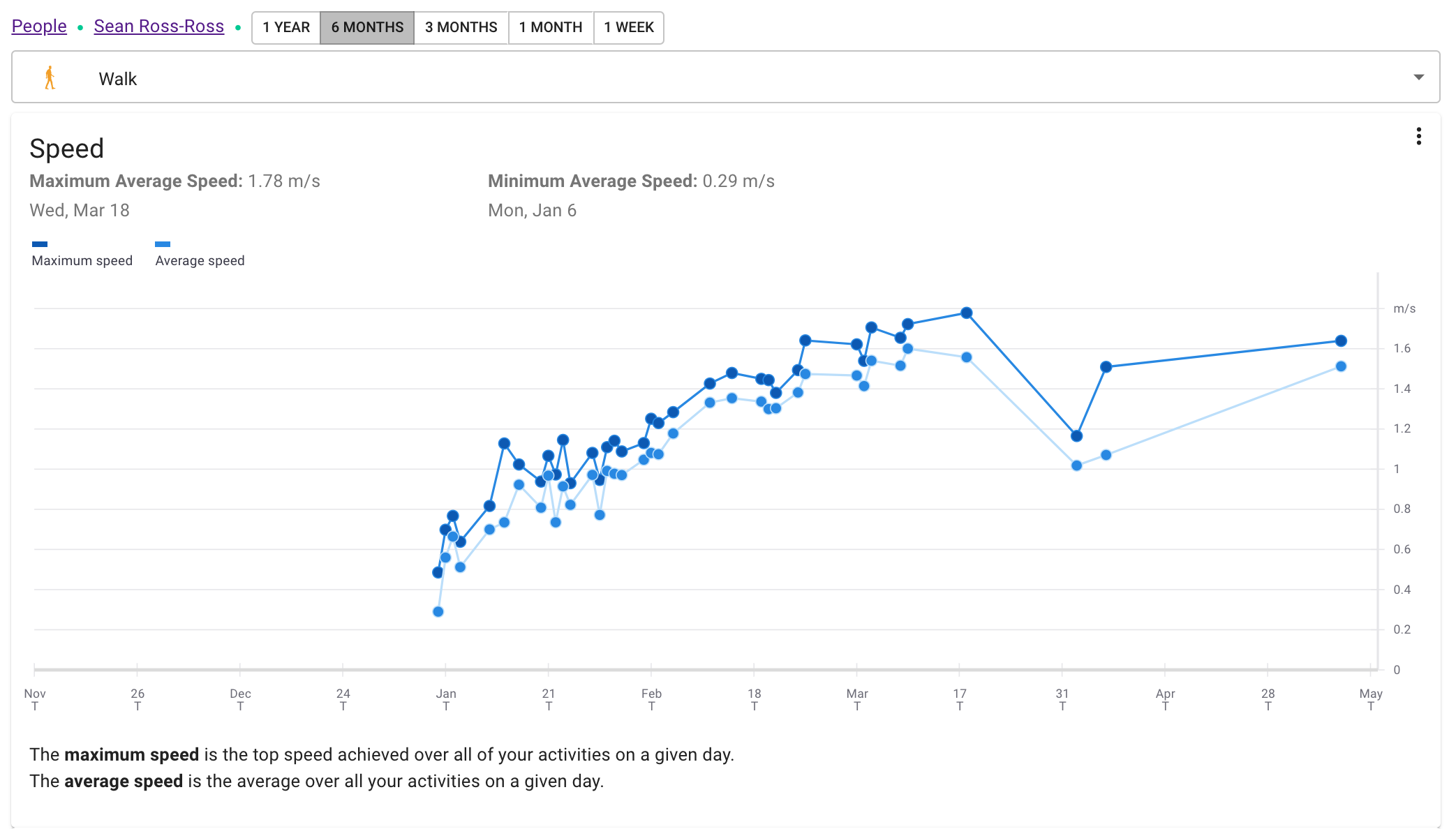
> Walking Asymmetry - For his first bootless walk test, Sean exhibits a g-force
asymmetry of 70.62% left asymmetric. Within 4 weeks his g-force asymmetry
decreases to be within 10%. As he continues to strengthen his right foot and
leg, he begins to overcompensate and develops a right asymmetry for 8
weeks. After moving to outdoor walking, he goes back to a left asymmetry, but
it is still within a normal range of 10%.
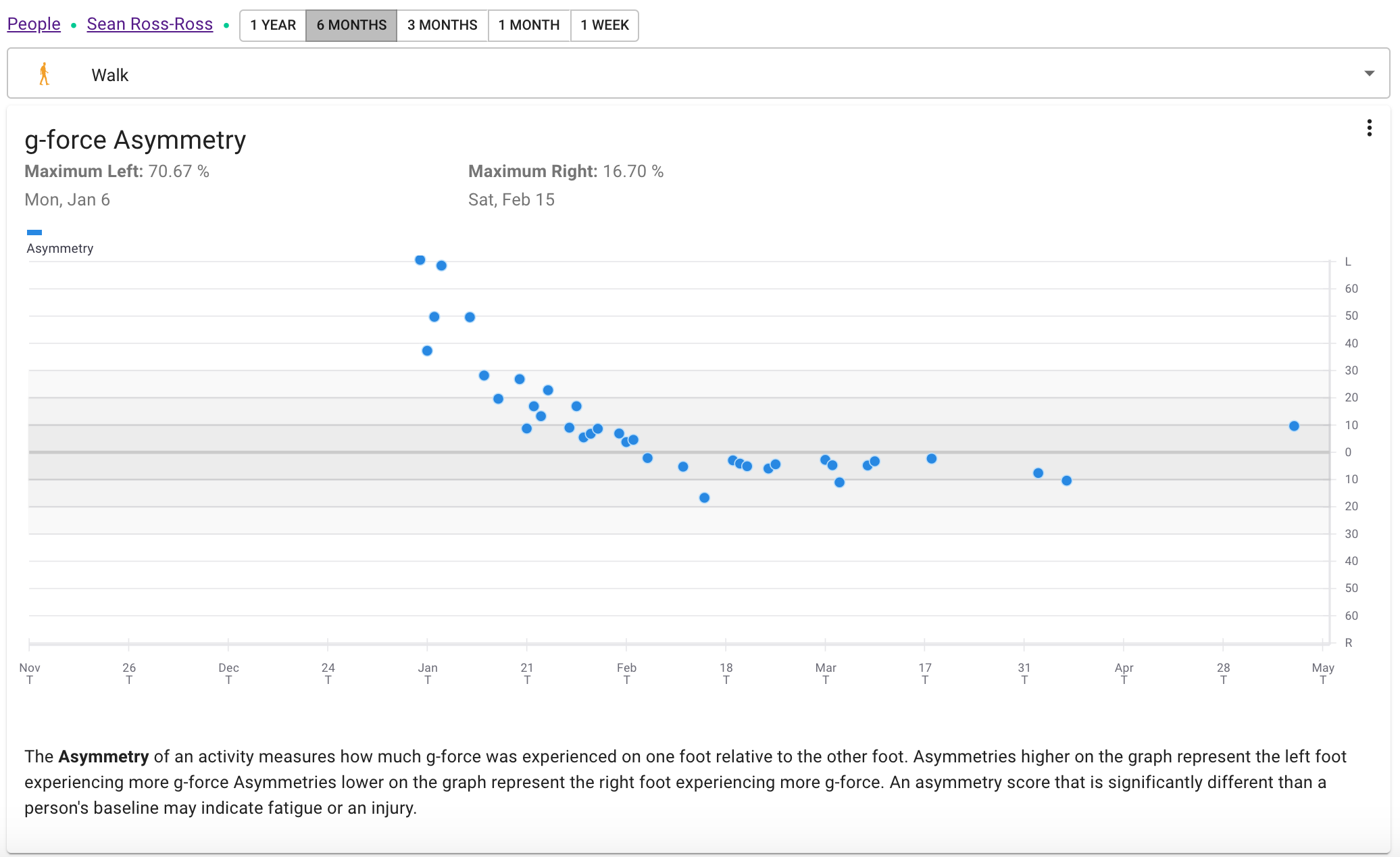
- Cyclic Jump Test - Around 8 weeks after his first walk test, Sean has developed enough strength in his ankle to begin cyclic jumping.
- RSI - Except for one very prominent drop after doing too much activity the previous day, Sean’s cyclic jump RSI increases from 1 to 1.55 over 9 weeks. The improvement in the cyclic jump test is a testament to the progress Sean is making in terms of strength in his injured ankle because the cyclic jump primarily engages the calf-ankle complex.
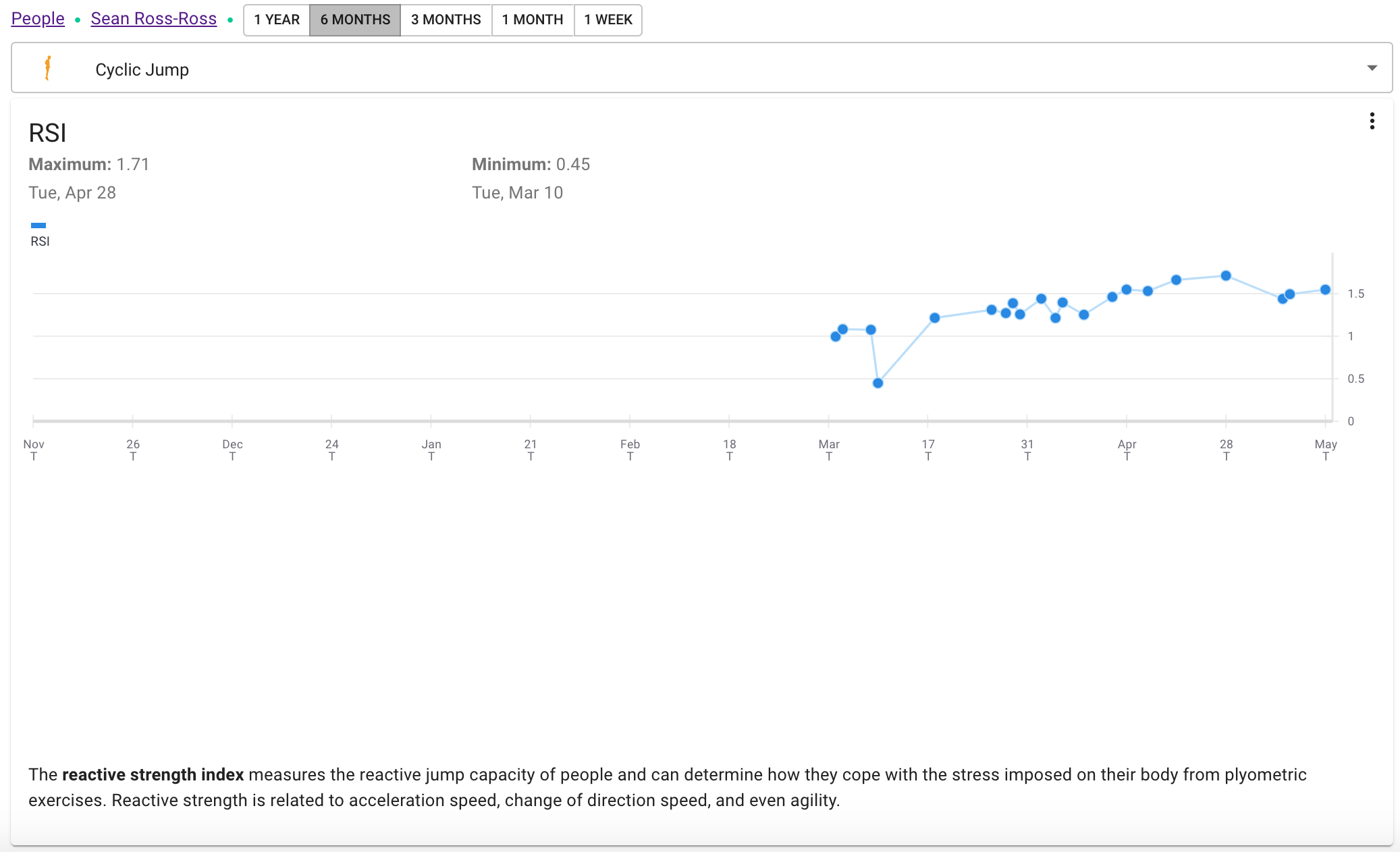
- Jumping Asymmetry - When he begins to do cyclic jumps, Sean’s hesitation about jumping on his injured right foot causes him to use a jumping strategy where he leans away from the injured foot. So for each jump he takes off with his right foot first and lands with his right foot last. This is visible in the raw data, where the grey bars show when each foot was off the ground. The result of this jumping strategy is a greater g-force asymmetry toward his right foot, as visible in the asymmetry graph. As his subconscious fear begins to fade, his jumping strategy becomes more balanced and his asymmetries return to the left side.
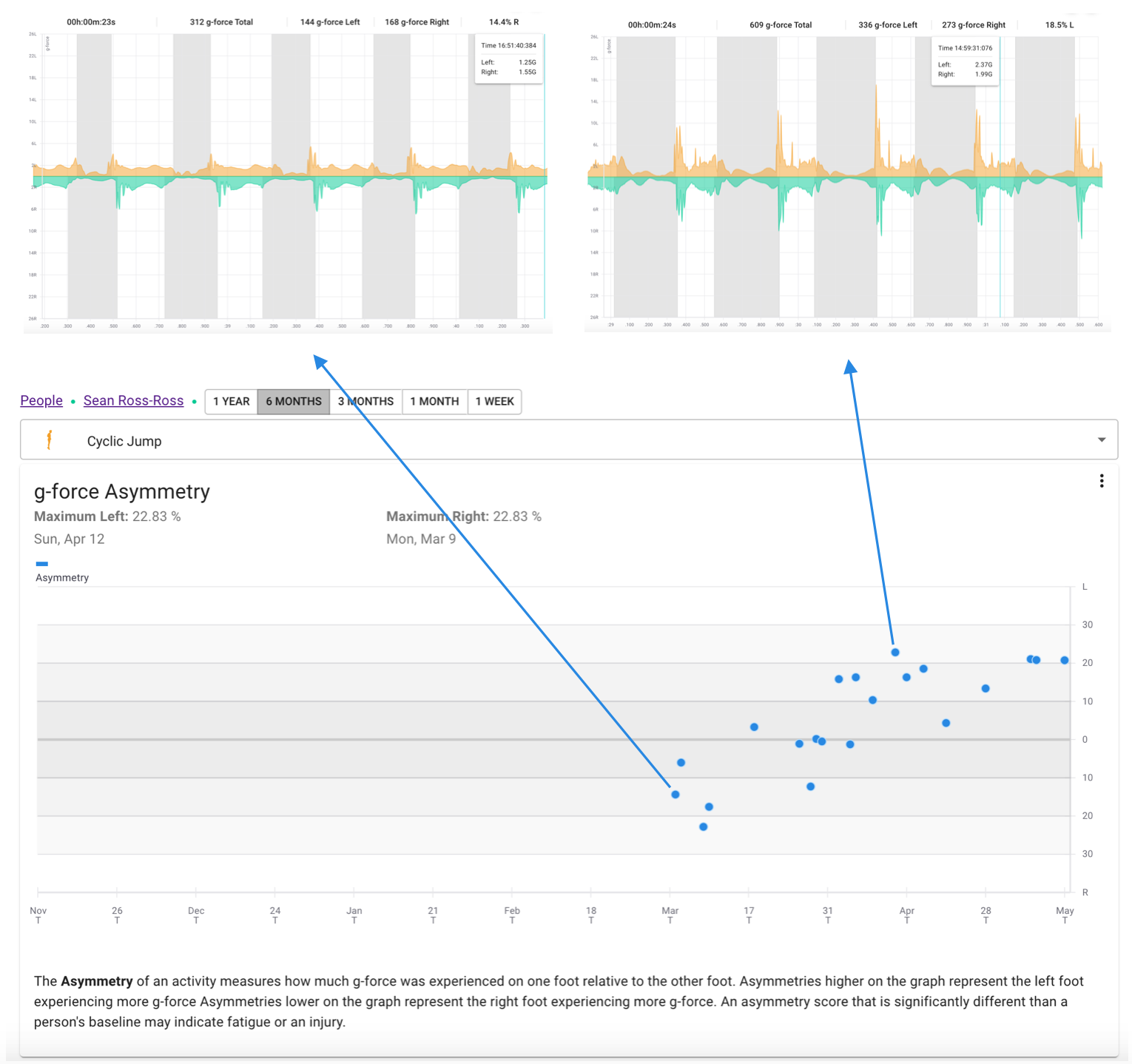
- Consecutive Countermovement Jump (CCMJ) Test - 11 weeks after he begins to walk, Sean begins to conduct countermovement jump tests.
- CCMJ RSI - The sporadic nature of Sean’s CCMJ RSI is consistent with his baseline jumping patterns, so it does not cause too much concern. The trend remains upward as his jumping mechanics improve.
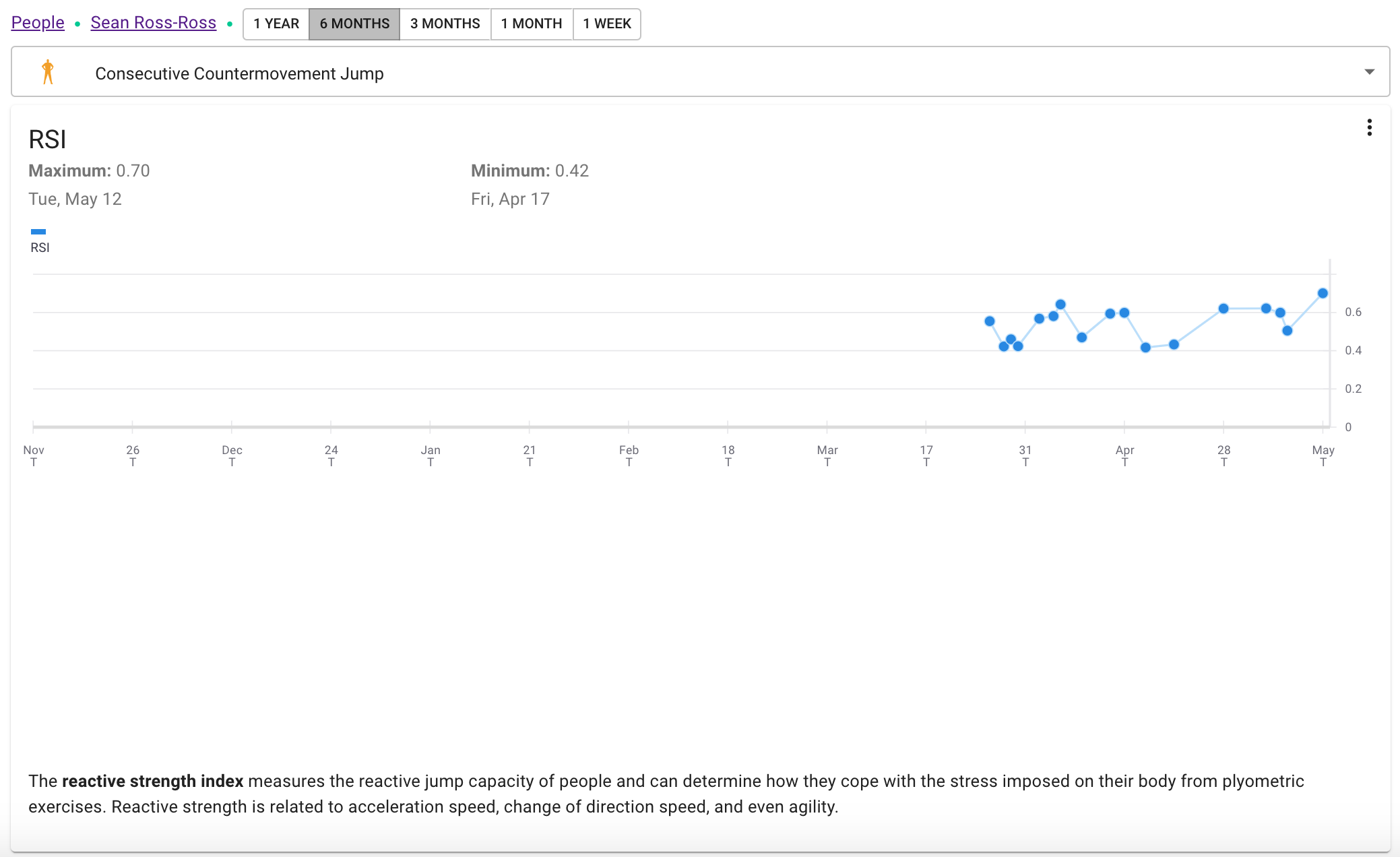
- CCMJ Asymmetry - Sean’s CCMJ asymmetry hovers around zero, which is also consistent with his pre-injury baseline. The CCMJ is a primarily quad-knee dominant motion, so while his injury affected his overall strength, his jumping patterns for this type of activity have stayed relatively consistent.
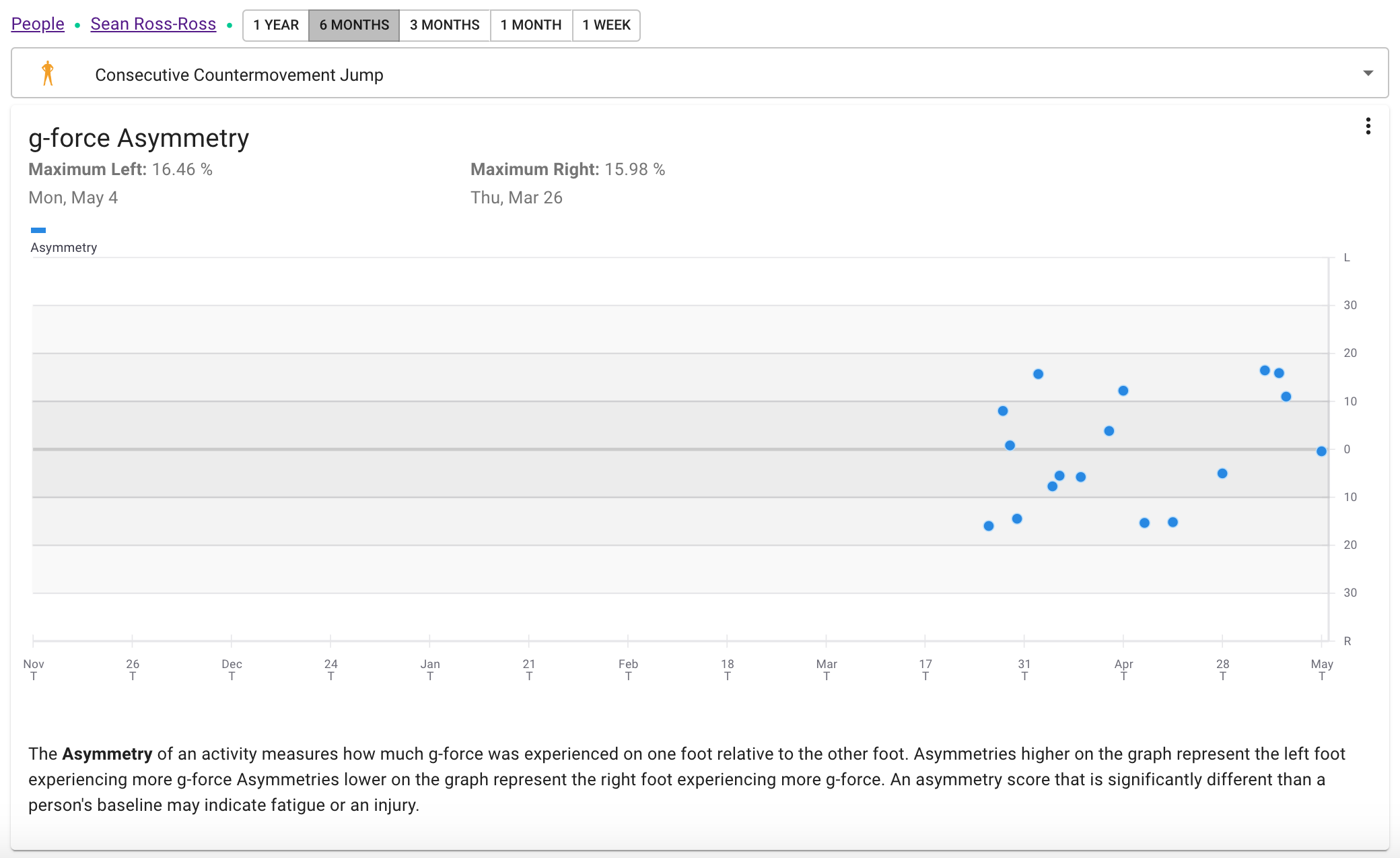
- Single Leg Jump Tests - 11 weeks after he begins to walk, Sean is able to conduct single leg jumps for height and distance.
- SLJ for Height - Over 6 weeks, Sean is able to increase his jump height on both legs and decrease the discrepancy between his legs from 57% to 37%.
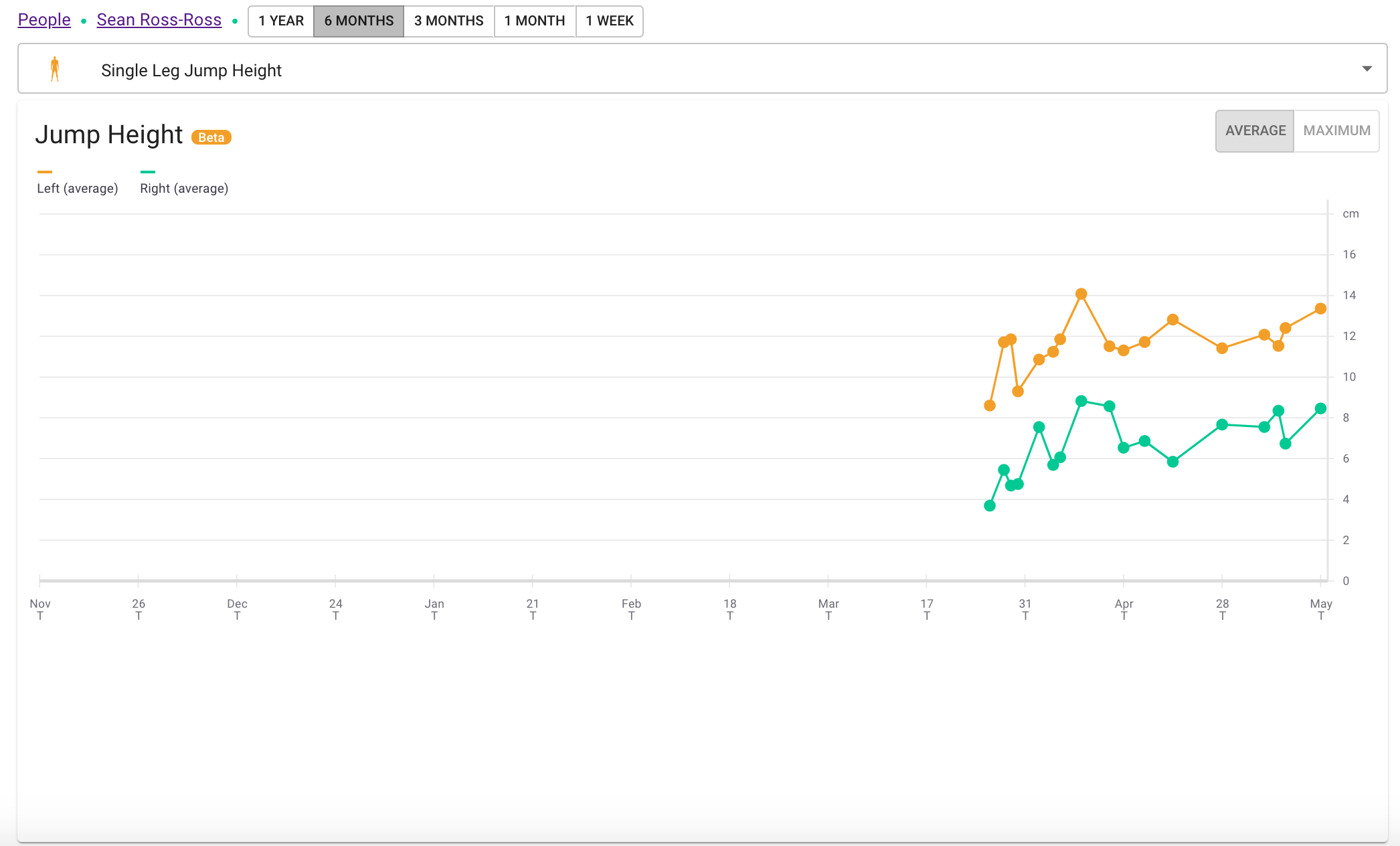
- SLJ for Distance - Over 6 weeks, Sean is able to increase his jump height on both legs and decrease the discrepancy between his legs from 49% to 14%.
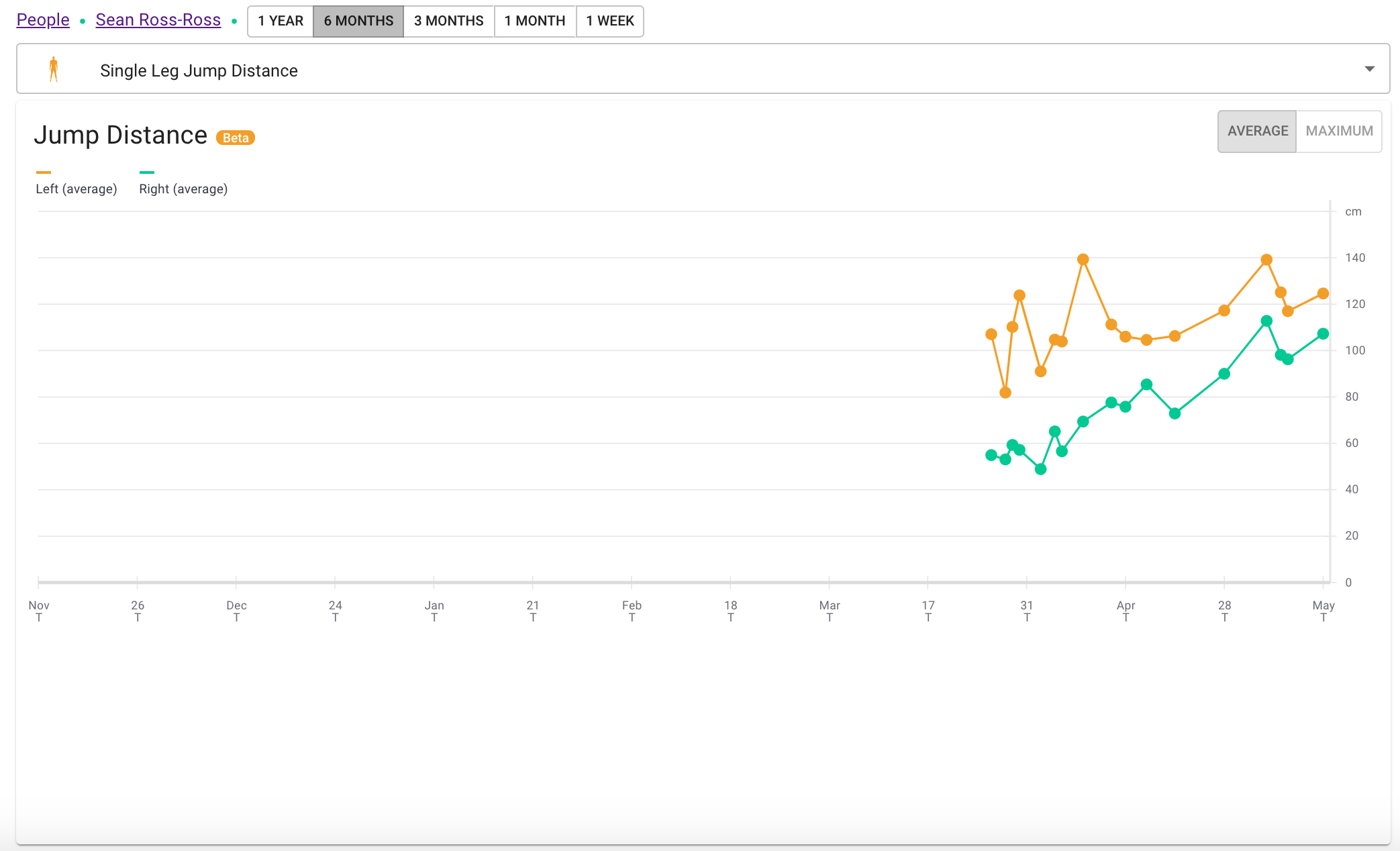
Summary:
After 16 weeks of rehabilitation, Sean is showing good progress in returning to his baselines and he can continue to gradually increase the intensity of his activities. With Plantiga’s objective measurements and a tailored rehabilitation program, Sean is confident in his own progress and can better understand his own limits in terms of over-activity and strength building.
Did this answer your question?.png?height=120&name=Plantiga%20lockup%20black%20(1).png)